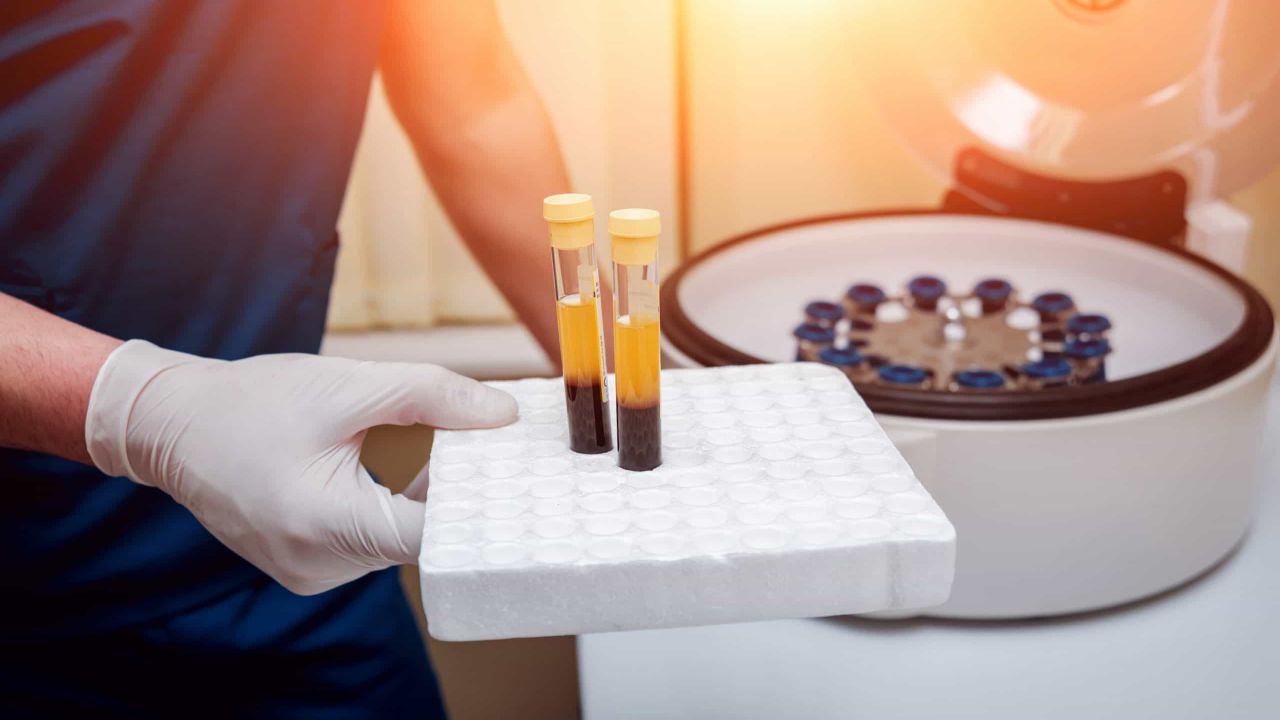In recent years, doctors have realised that the body is capable of self-healing, leading to the emergence of PRP treatment. One must be curious to learn what PRP is and How PRP Treatment Works.
Platelet-rich plasma therapy is a regenerative medicine that can increase the natural growth factors your body employs to regenerate tissue.
Dr Gaurav Kant Sharma emerged as a prodigy in the medical science and has contributed to the world class research regarding Platelet-rich plasma therapy and performed more than 3000 Ultrasound guided PRP Injections for various sports injuries, knee & heel pain, achilles tendon pain, rotator cuff tear, tennis elbow treatment and many more.
What Is Platelet-Rich Plasma (PRP) And How Does PRP Treatment Work
Platelet-rich plasma (PRP) therapy accelerates the repair of injured tendons, ligaments,muscles, and joints using injections of the patient's own platelets. Thus, PRP injections utilise each patient's natural healing system to treat musculoskeletal disorders through musculoskeletal and joint imaging analysis.
PRP injections are made by centrifuging one to several tubes of one's own blood in order to concentrate the platelets. These activated platelets are then injected directly into the damaged or diseased tissue of the patient.
This stimulates and increases the quantity of reparative cells your body creates by releasing growth factors such as collagen.
Platelet-rich plasma has been discovered to dramatically increase the healing process, and shoulder pain caused by rotator cuff tears, Achilles tendon ruptures, and other soft-tissue injuries are increasingly being treated with PRP injections.
PRP has also been shown to enhance function and decrease pain in patients with tendonitis or chronic tendinosis diseases and requires chronic pain management.
PRP is super effective in case one is experiencing symptoms and causes of tennis elbow and requires manual therapy or advanced PRP injection interventions. Additionally, remarkable results of PRP injections are witnessed on patients with plantar fasciitis.
Dr. Kant, a pioneer in the provision of non-surgical treatments utilising different novel non-surgical procedures, has mastered the delivery of immaculate PRP injections intervention outcomes for a global clientele at JIPSI.
How Does PRP Treatment Work?
To understand how PRP treatment works, one should understand that PRP is essentially blood plasma containing a high concentration of platelets.
To produce PRP for treatment, a little amount of blood is collected from the patient. Next, the whole blood is centrifuged to separate the red blood cells from platelets, white blood cells and the plasma.
This layer of plasma with platelets and white blood cells is then separated and centrifuged once more to separate the plasma enriched platelets. Lastly, this procedure generates the injectable PRP.
Depending on the type of the injury or damage, the doctor injects PRP into precise places for sports injury management, orthopaedic treatments and chronic pain management.
Live, real-time ultrasonic or fluoroscopic imaging enables the physician to "see" inside the patient's body, guiding the PRP injection process and ensuring that the treatment is administered to the exact area.
Are PRP Therapies Beneficial for Your Injury or Requires Chronic Pain Management?
The research reveals that PRP injections have a great therapeutic potential for orthopaedic and sports-related ailments. But will they serve your needs?
No single therapy modality is effective for every patient or injury type. One must go through proper musculoskeletal imaging before drawing any diagnosis conclusions.
However, orthobiologic treatments, such as platelet-rich plasma (PRP) and bone marrow-derived stem cell injections, have the potential to benefit a wide spectrum of patients with acute injuries and chronic diseases.
Tendinopathy, ligament injuries, plantar fasciitis, and rotator cuff tears are a few of the common ailments that can be treated with PRP. In addition, ankle sprains, MCL tears, patellar and Achilles tendon injuries, as well as jumper's or runner's knee, may be treatable with orthobiologic therapy.
How Do PRP Treatments Enhance The Healing Process?
Platelets include more than thirty bioactive proteins utilised in the repair of human tissue. Additionally, they secrete seven protein growth factors that initiate the wound healing process.
Lastly, PRP contains three types of proteins that facilitate cell adhesion, a crucial aspect of the healing process.
The numerous mechanisms by which PRP therapies promote recovery are extremely complex. In the most basic terms, PRP injections stimulate the same processes the body would usually use, but enhanced by a significant factor.
Platelets, for instance, suppress inflammatory cells and promote cellular proliferation, whereas growth factors stimulate the repair of bone and soft tissue.
Expert Tips
You are advised to book your consultation with Dr. Kant - The Best Physiotherapist in India for expert supervision and getting the PRP intervention executed by the safest hands in the country.
From tennis elbow to plantar fasciitis, he has treated thousands of patients with platelet-rich plasma (PRP) injection therapies. JIPSI also offers additional services like sports injury management, manual therapy, regenerative therapy and musculoskeletal imaging interventions etc.


